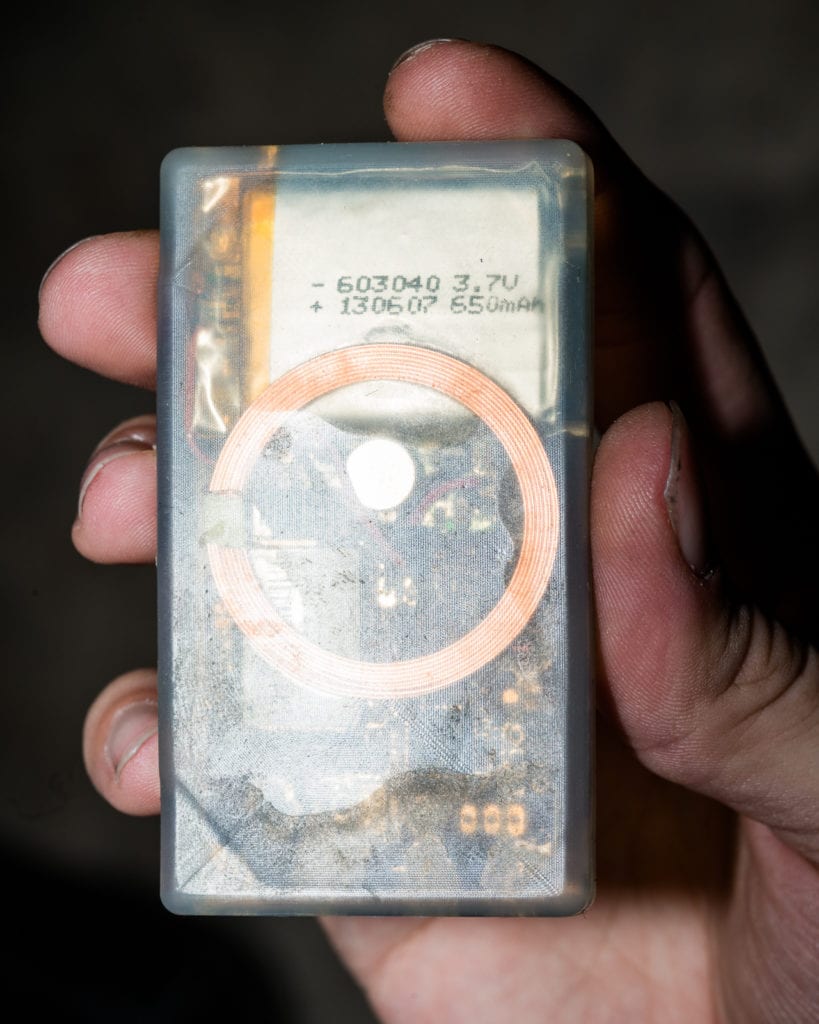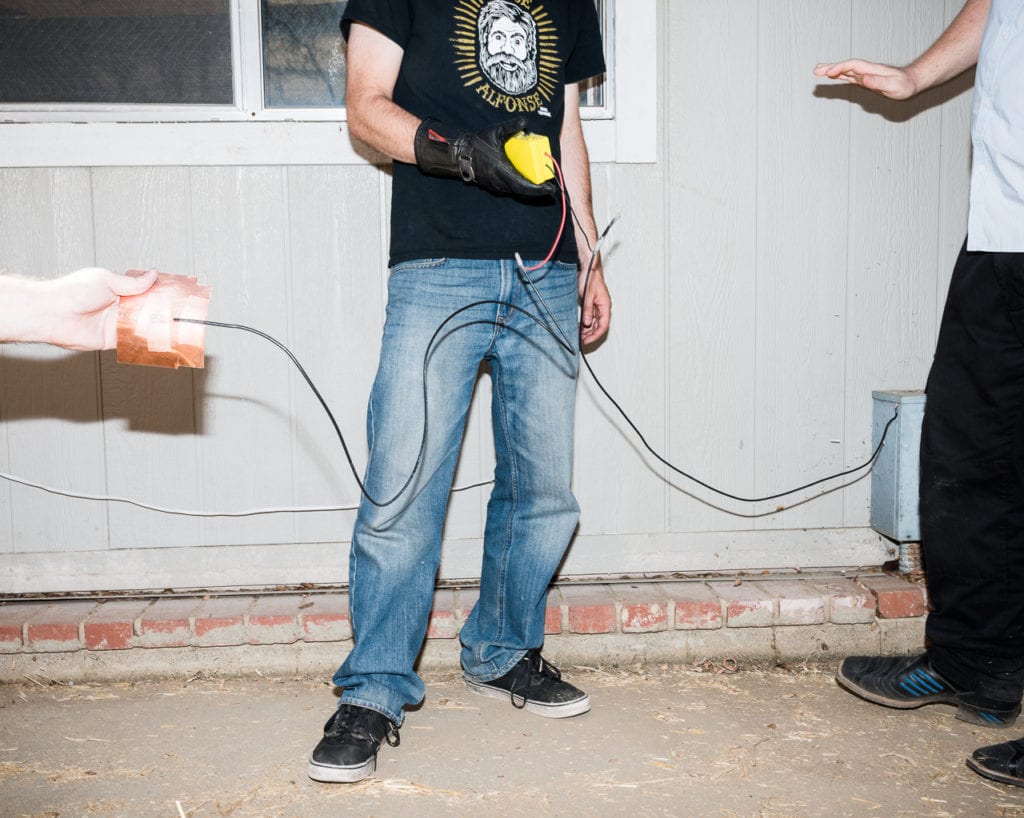In a rural town, somewhere outside Los Angeles, a patient is having a technological implant surgically inserted into his body. It sounds like something from science fiction – and the Grinder community takes its name from Warren Ellis’ graphic novel Doktor Sleepless – but it’s very real. Relishing the thought of slicing open their bodies and becoming real-life cyborgs, the Grinders are bringing dystopian fantasies to life.
Hannes Wiedemann’s series Grinders focuses in on this community of body hackers, and was shortlisted for BJP’s 2017 Breakthrough Awards. With all the blood and grit of the operating table, Wiedemann’s images show a group dedicated to the advancement of humankind, through repeated surgeries and beta testing.
“When I stumbled across the topic, I was confused as to whether I was dealing with ideas of the future, present or past,” he says. “Part of that phenomenon is a notion of utopia and a desire to achieve a better future, but there is also an element of self-representation through ‘retro-futurist’ aesthetics.”
Tracking down these human guinea pigs was a challenge for the young German, who discovered the community through a friend and at first only casually followed its movements through an online forum. When he decided to create a project based around its work in 2015, he faced the tricky task of locating individuals across the US.
“There is no official entity representing that community, so finding them and getting a basic understanding of their work needed some patience,” he explains.
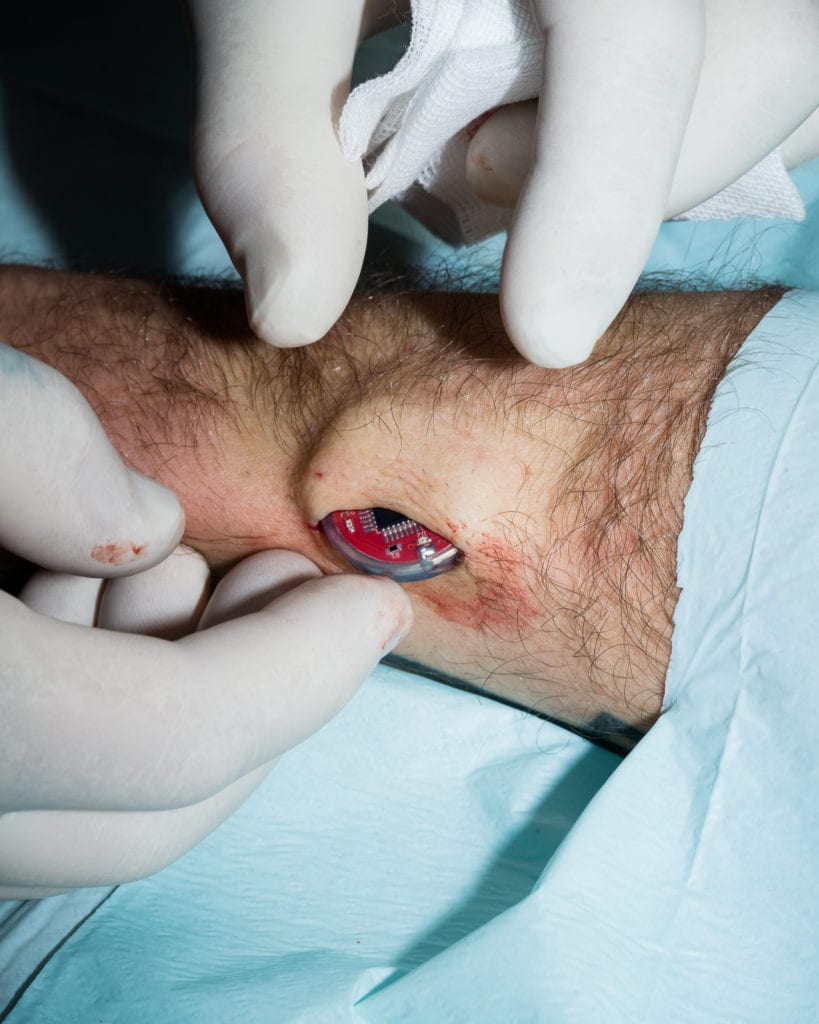
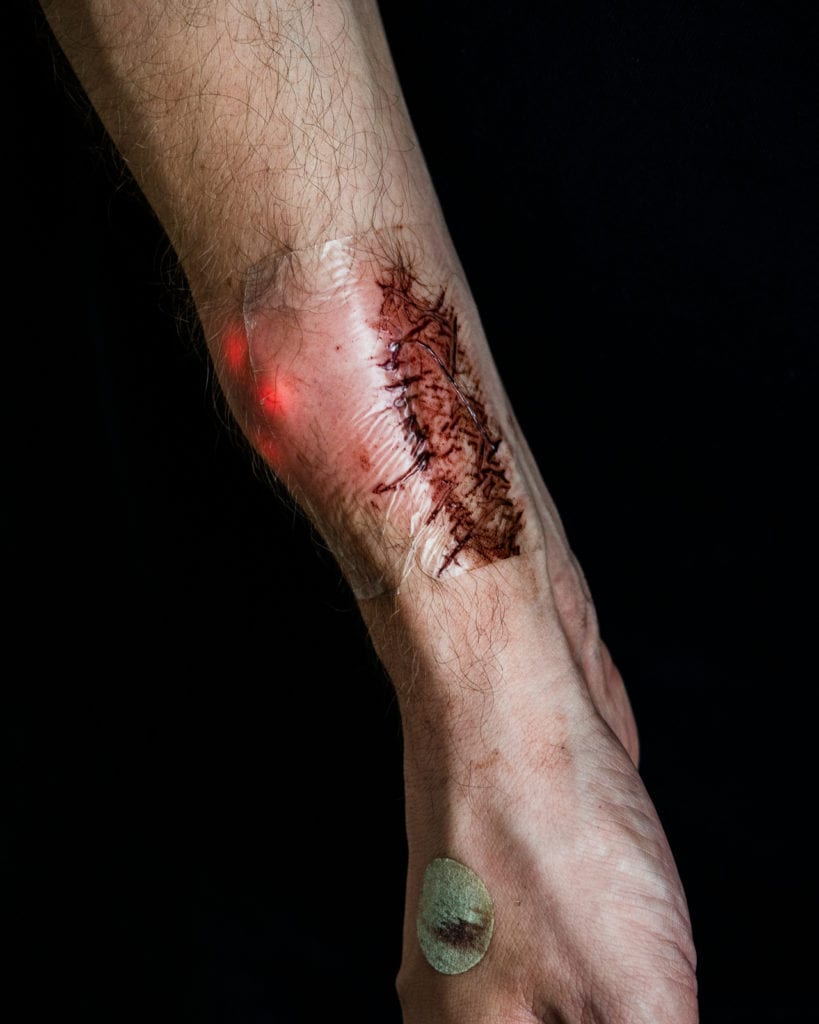
It looks shocking but Wiedemann says he didn’t find it so, when he came face-to-face with his first real-time modification. “I was prepared and knew what’s coming. For me though it was stunning how casual they were about slicing their body, putting some gadget in for beta testing and removing it just a few weeks later.”
These operations are no sleek insertions though; the ethos is more cyberpunk than future perfect, and the photographs graphically record the blood and cuts on show during the process. Wiedemann deliberately chose to keep this visceral element, even making it central to the series, to confront any expectations of sleek operations and what he decries as “horrible stock imagery”.
“I spent part of my childhood in a public observatory in small-town Germany, and was surrounded by astronomers, physicists and engineers of all kinds,” he says. “When science and engineering get practical it may look dirty and weird. That notion of grittiness is very important to me.”
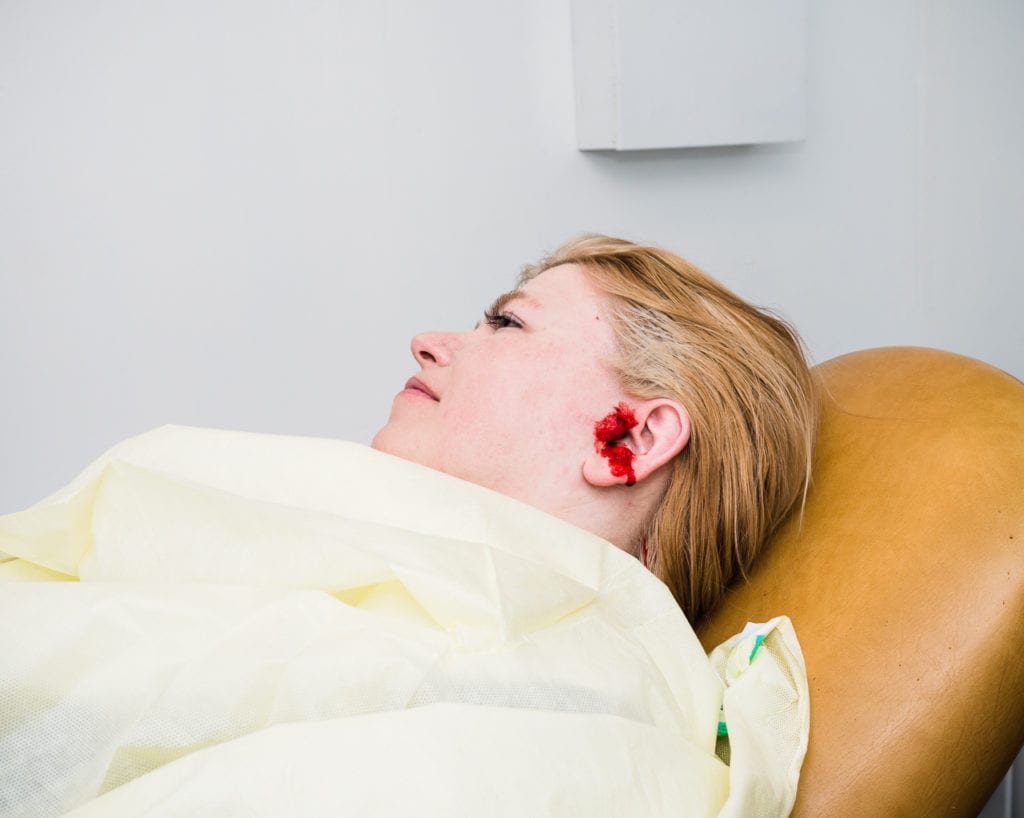
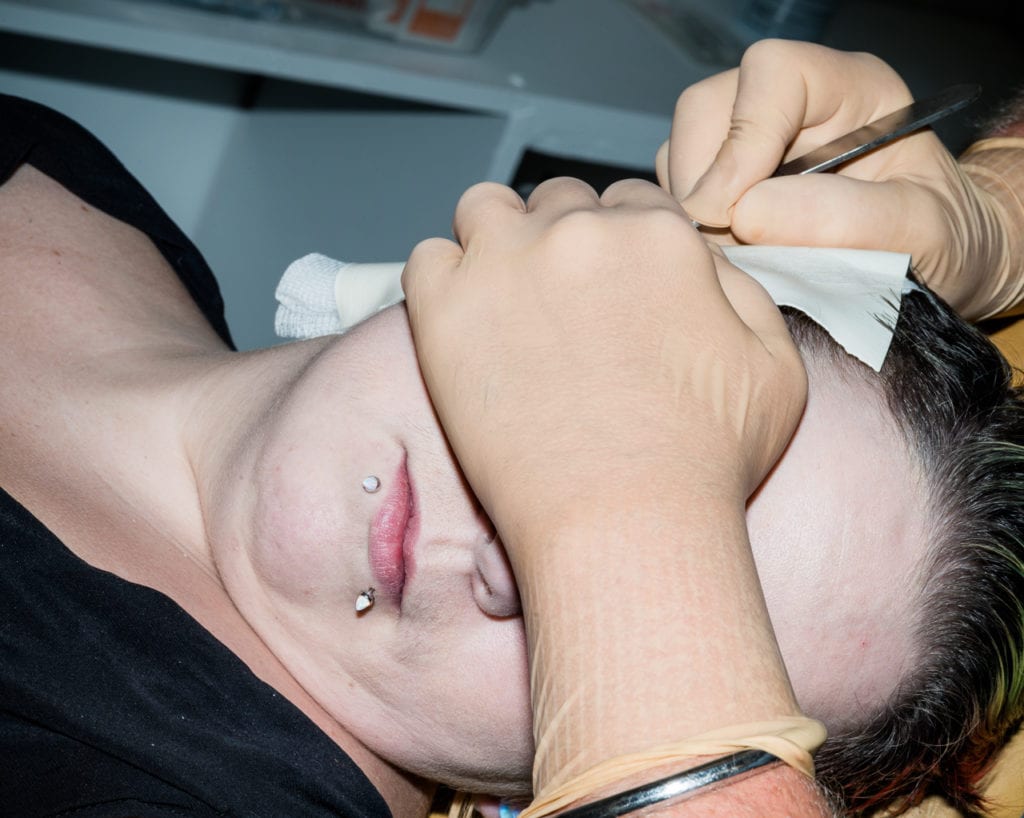
“In Germany for example, a rather essentialist conception of ‘nature’ seems to prevail and many people reject the idea of human enhancement entirely.”
Then where does this fascination with passing human limits come from? There is no simple answer, but Wiedemann believes that the Grinder community is searching for a transhuman form of life – one which combines body and machine to facilitate and simplify our lives.
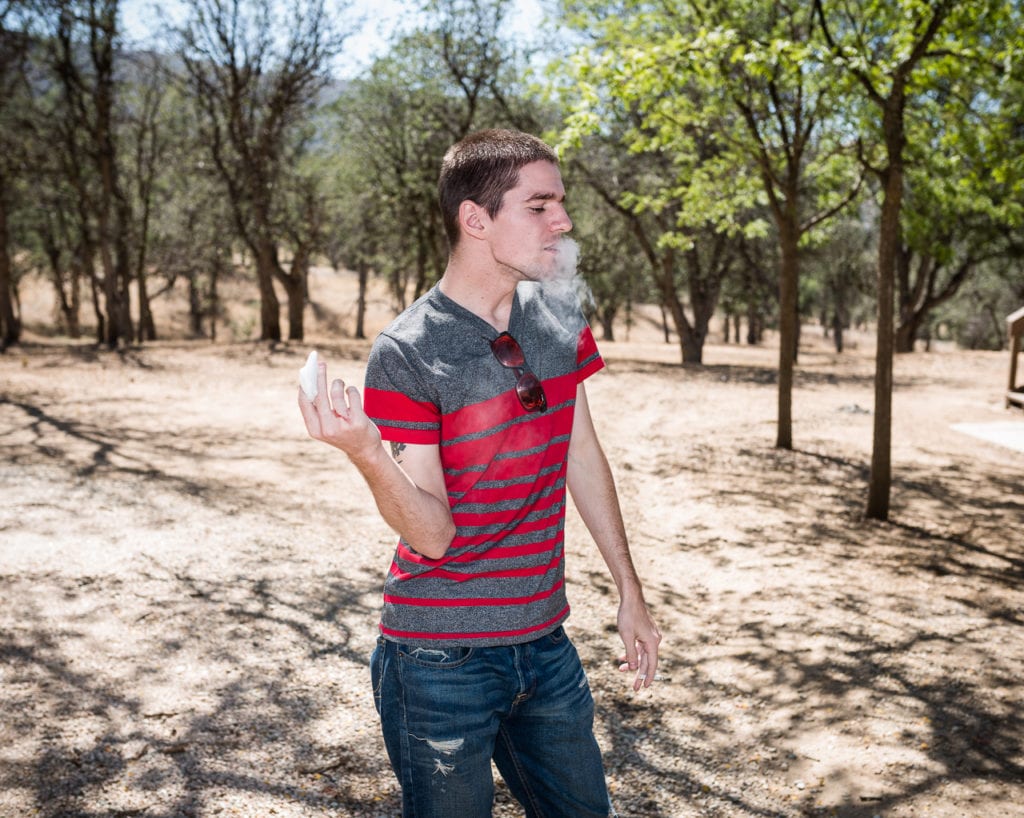
Grinders has proved a popular series, featuring in mainstream media and prompting discussions in more academic circles, including Haus der Kulturen der Welt Technosphere Magazine; Wiedemann remains interested in the theme, and his next project has taken him to South Korea, where he’s producing images that incorporate plastic surgeries and fibre data cables. “As technology is increasingly dominating our lives, it is hard to avoid it when being a photographer,” he says.
www.hanneswiedemann.com
